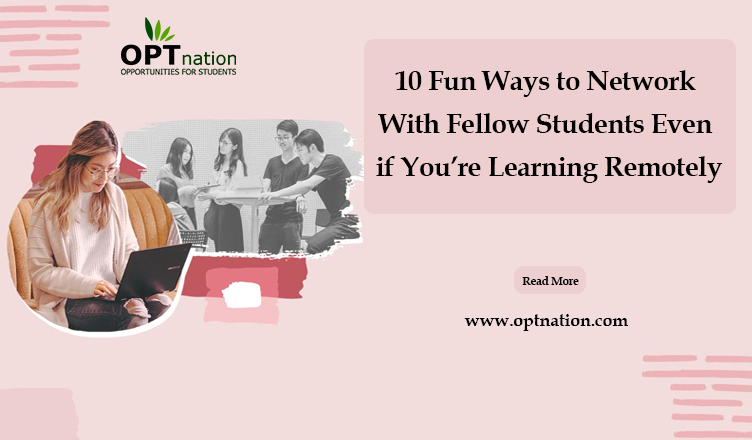In the era of remote learning, forming connections with fellow students can feel like a challenge.
Yet, with creativity and digital resources at our disposal, we can make these virtual interactions fun and engaging. Whether it’s through academic collaborations or playful competitions, online networking offers multiple opportunities to establish meaningful relationships remotely.
This article discusses some of the fun ways for students learning remotely to network effectively among their peers, ensuring that distance doesn’t hinder their social or academic experience.
1. Virtual Study Groups
Virtual study groups are becoming an increasingly popular networking tool for students who are learning remotely. By coming together in a virtual environment, you can share knowledge, discuss course materials, and clarify doubts which help enhance your academic performance.
This also proves to be advantageous as it allows for flexibility in scheduling sessions to accommodate different time zones. You can start these sessions on Zoom or Google Meet.
2. Social Media Networking
In a world that thrives on digital connections, social media networking offers immense possibilities for students learning remotely. Networks like Facebook, LinkedIn, Snapchat, TikTok, Twitter, and Instagram weave the global student community into one vast web.
These platforms host numerous groups tailored to specific fields of study, providing you with a way to connect with students who share similar academic interests no matter where you live.
3. Create a Group Video
Creating easy-to-make group school videos is an entertaining and effective networking activity for students learning remotely. This requires you to coordinate with your peers, which promotes communication and collaboration skills. The creative process can also be a fun stress reliever.
Besides the fun element, these videos celebrate shared experiences and foster a closer sense of community, even from afar. In the end, they give you a great outlet to connect with others.
4. Collaborative Projects
Collaborative projects are coordinated exercises that leverage platforms like Google Docs, enabling you to work on assignments or projects in real-time with your peers. This promotes division of labor, shared responsibility and allows you to see your fellow learner’s strengths.
Simultaneously, it enriches your academic experience and communication skills as you navigate different perspectives and ideas. After all, interaction-based learning is often more fulfilling.
5. Online Game Nights
Introducing online game nights is a great way to connect with your peers beyond academics. Hosting a virtual evening devoted to multiplayer online games fosters a sense of community. The cooperative nature of many games can help promote teamwork and strategic thinking.
These playful sessions provide much-needed relaxation after intensive study and facilitate light-hearted interaction among peers. It’s about sharing laughs and rooting for each other!
6. Webinars
Webinars allow you to gain expert insights on topics relevant to your studies, opening avenues for expansive, intellectual discussions. Despite being a passive listener in these sessions, you have the chance to interact with diverse students through comments and Q&A segments.
Your active participation can serve as conversation starters with peers who resonate with your perspective. Thus, webinars bridge the gap between remote learning and engaging interactions.
7. Online Quizzes and Competitions
When thinking of fun ways to network remotely, online quizzes and competitions can’t be overlooked. These virtual events test your knowledge and encourage active engagement. Participating in these contests can ignite exciting conversations within course groups.
Online quizzes are a creative way to assert your presence amongst students. Online forums that host these quizzes provide a platform for healthy competition and mutual admiration.
8. Fitness Challenges
Inviting fellow students to participate in virtual fitness challenges is a health-conscious way to network while learning remotely. Organizing weekly challenges where everyone shares their progress can serve as a powerful motivator, encouraging mutual support and competition.
Whether it’s a yoga pose, a dance-off, or a cardio routine, these fitness activities provoke interaction and foster the spirit of community amongst distance learners instantly.
9. Blogging Forums or Platforms
Whether you’re studying for a specific role or starting your own business, a website can separate you from the competition. So why not build these schools early by starting your own blog? Plus, blogging on shared platforms or forums is a distinctive way to network remotely.
These digital spaces allow you to express your thoughts on studies, hobbies, or experiences, thereby creating opportunities for like-minded students to connect over shared interests.
10. Chat Rooms and Discussions Boards
Chat rooms and discussion boards are valuable tools for enhancing academic discourse and student networking. Engaging in these online spaces allows you to connect directly with fellow students, discussing topics from class materials to casual themes found in novels or text.
The back-and-forth dialogue happening in real-time offers immediate feedback and clarification on various topics, fostering a dynamic learning environment that can enhance your experience.
In Conclusion
All of these networking methods showcase various ways remote students can keep their social game strong. Building social connections as you pursue your education remotely is equally vital as your academic progress. So, don’t hesitate to dive into these fun activities and platforms!

